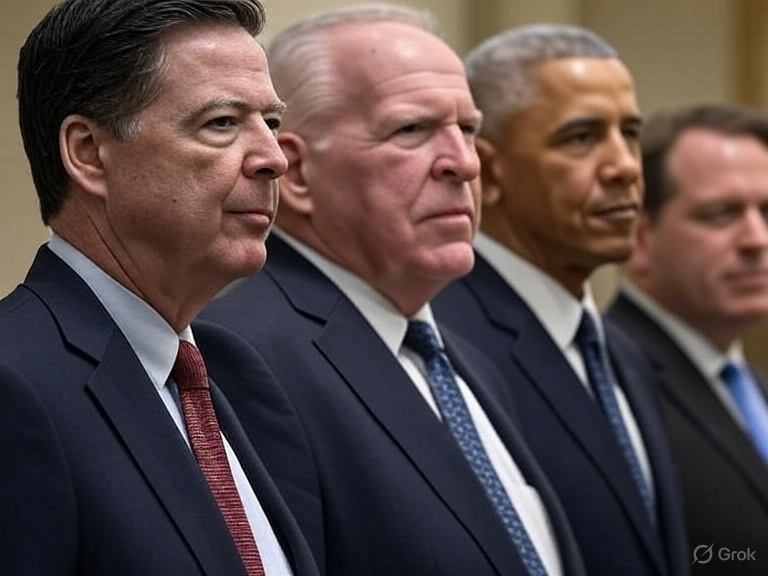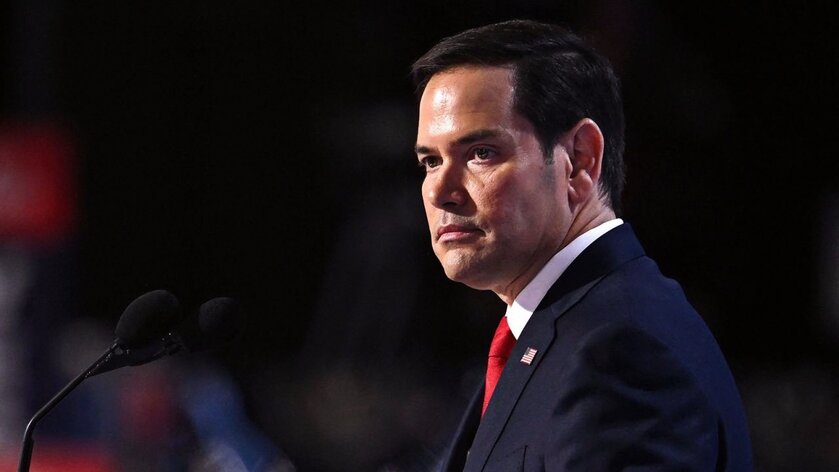The House Intelligence Committee’s 2020 report, declassified by Director of National Intelligence Tulsi Gabbard, revealed that the intelligence community lacked direct evidence that Russian President Vladimir Putin sought to help elect Donald Trump in 2016.
Despite this, the report reveals that then-President Barack Obama directed the publication of an Intelligence Community Assessment (ICA) in 2017 that suggested otherwise, potentially incorporating biased or implausible intelligence.
The House committee investigation, initiated by former Chairman Devin Nunes, was kept highly classified and stored in a restricted CIA vault until its recent release.
The report scrutinizes the creation of the 2017 ICA, which was ordered by Obama and spearheaded by then-CIA Director John Brennan. It reveals the ICA was drafted by only five CIA analysts, with one principal drafter, under unusual directives from senior political appointees.
The process was rushed, with limited coordination within the CIA or broader intelligence community, which curtailed challenges to its conclusions. This haste, the report argues, was to ensure publication before Trump’s inauguration.
Central to the report’s findings is the inclusion of the now-discredited anti-Trump Steele dossier in the ICA, despite Brennan’s awareness of its reliance on unverified “internet rumor.”
The committee found that the ICA relied on 15 reports, three of which were substandard, containing unclear or potentially biased information. These flawed reports underpinned the ICA’s claim that Putin preferred Trump over Hillary Clinton, a conclusion the committee deems misrepresented.
The report highlights a single, unverifiable sentence fragment from one of these substandard reports as the sole classified evidence suggesting Putin’s preference for Trump. It further notes that reliable intelligence contradicting this narrative was either ignored or selectively quoted.
Two senior CIA officers reportedly warned Brennan that there was no direct evidence of Putin’s intent to elect Trump, yet the ICA proceeded without acknowledging these concerns.
Testimony from a Putin confidant, cited in the report, indicated that Putin was indifferent to the election’s outcome, having expressed concerns about both candidates’ weaknesses.
The House committee found that the ICA overlooked intelligence suggesting Russia anticipated a Clinton victory, believing she would be easier to work with. It also failed to explain why Putin did not leak more damaging material on Clinton, despite opportunities to do so.
The report criticizes the ICA for dismissing plausible alternative explanations of Putin’s intentions, such as intelligence indicating he viewed Clinton as a more vulnerable president.
This selective use of intelligence, the committee argues, was part of an effort to push a narrative of Russian support for Trump, despite evidence to the contrary.
The declassification aligns with earlier revelations from 2020 media reports of Obama-era officials’ testimonies before the House Intelligence Committee. Officials, including James Clapper, Loretta Lynch, and Susan Rice, admitted they lacked “empirical evidence” of Trump-Russia collusion in 2016.
These findings echo the conclusions of Special Counsel Robert Mueller’s investigation, which found no criminal coordination between the Trump campaign and Russia.
The report’s release follows Gabbard’s declassification of documents showing Obama’s national security team laid the groundwork for the Trump-Russia collusion probe post-election.
At the "unusual" direction of Barack Obama, corrupt intelligence officials led by Brennan, published "potentially biased" or "implausible" intelligence.
A criminal referral has been sent to the FBI targeting Brennan and former FBI Director James Comey for their roles in promoting the Russia narrative, including their knowledge of Clinton’s campaign efforts to tie Trump to Russia via the Steele dossier.
Obama’s spokesman has dismissed these claims as “ridiculous” and a distraction, maintaining that Russia’s interference in the 2016 election is a widely accepted fact, though not involving vote manipulation.
"Out of respect for the office of the presidency, our office does not normally dignify the constant nonsense and misinformation flowing out of this White House with a response," Obama spokesman Patrick Rodenbush said in a statement. "But these claims are outrageous enough to merit one."
"These bizarre allegations are ridiculous and a weak attempt at distraction," Rodenbush said. "Nothing in the document issued last week undercuts the widely accepted conclusion that Russia worked to influence the 2016 presidential election but did not successfully manipulate any votes."
Speaking to reporters at the White House Wednesday, Gabbard responded to Obama's comments.
"There is irrefutable evidence that details how President Obama and his national security team directed the creation of an intelligence community assessment that they knew was false," Gabbard said. "They knew it would promote this contrived narrative that Russia interfered in the 2016 election to help President Trump win, selling it to the American people as though it were true. It wasn't."
"All come back to and confirm the same report: There was a gross politicization and manipulation of intelligence by the Obama administration intended to delegitimize President Trump even before he was inaugurated, ultimately usurping the will of the American people," Gabbard said
"We have referred and will continue to refer all of these documents to the Department of Justice and the FBI, to investigate the criminal implications of this for the evidence," Gabbard said. "Correct. The evidence that we have found, and that we have released, directly point to President Obama leading the manufacturing of this intelligence assessment. There are multiple pieces of evidence and intelligence that confirm that fact."
On Tuesday, President Donald Trump accused Obama of being the "ringleader" of investigations into whether his campaign colluded with Russia in the 2016 election.
Here is the ICA report declassified by Gabbard















